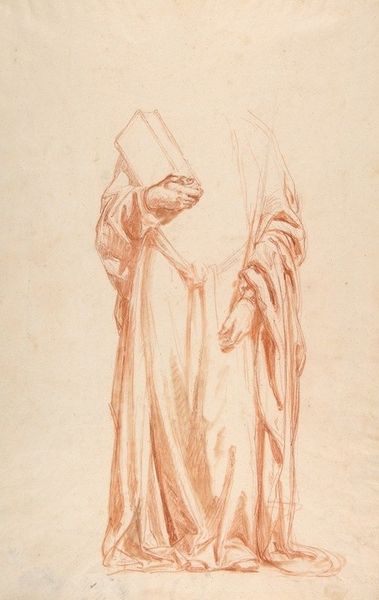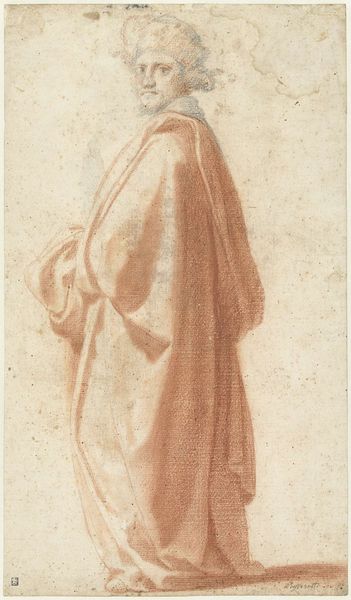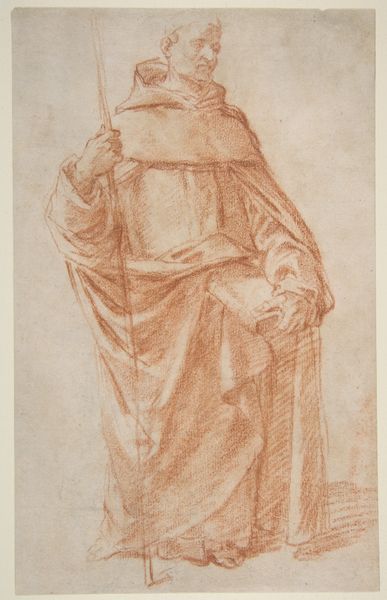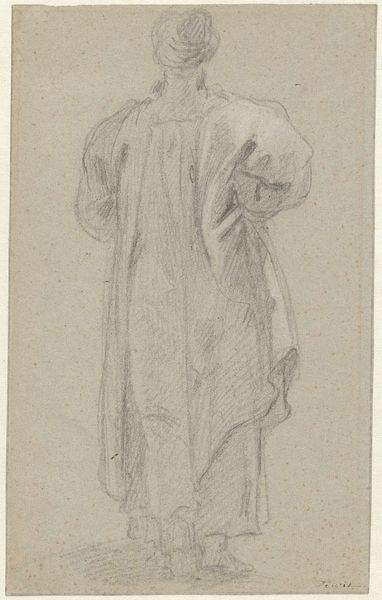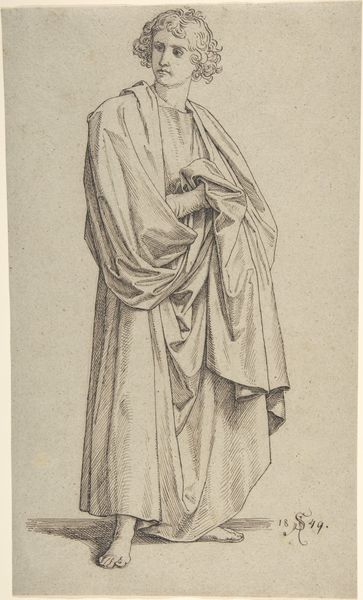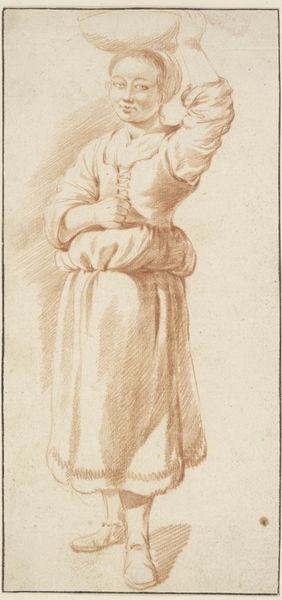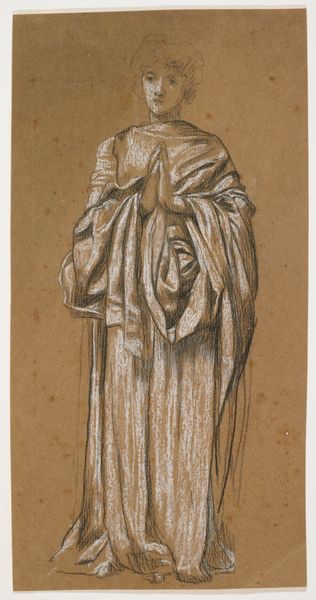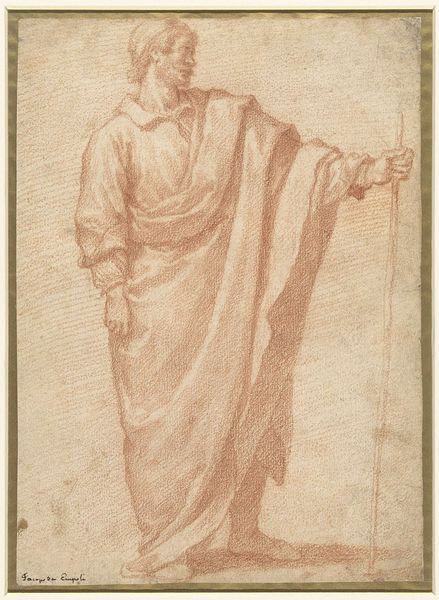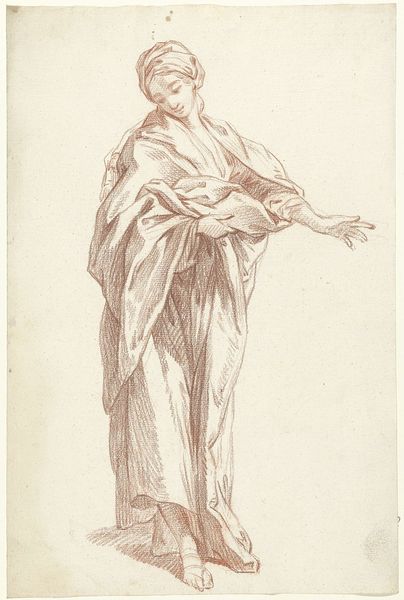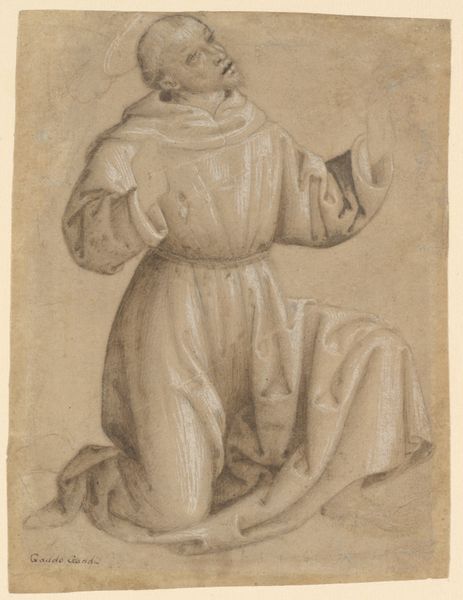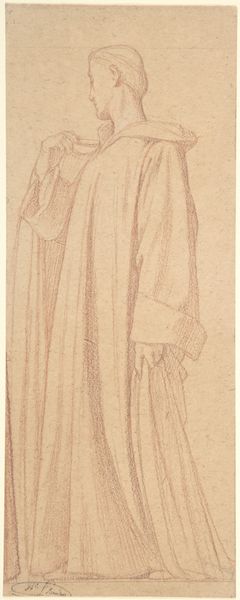
drawing, paper, ink
#
portrait
#
pencil drawn
#
drawing
#
amateur sketch
#
toned paper
#
light pencil work
#
pencil sketch
#
figuration
#
paper
#
personal sketchbook
#
ink
#
pencil drawing
#
line
#
sketchbook drawing
#
portrait drawing
#
pencil work
#
academic-art
Dimensions: height 396 mm, width 244 mm
Copyright: Rijks Museum: Open Domain
Curator: Standing before us is "Staande monnik," or "Standing Monk," a drawing attributed to Eustache Lesueur, created sometime between 1627 and 1655. It's part of the Rijksmuseum's collection. Editor: My immediate impression is one of austere grace, almost ethereal. The figure seems to float rather than stand, an effect enhanced by the soft, reddish chalk on the toned paper. Curator: Indeed. Lesueur's use of sanguine chalk lends the piece a warmth that softens what could have been a severe portrayal of monastic life. The monk’s attire speaks to devotion and self-sacrifice; note the deliberate absence of facial features, anonymizing him, making him a stand-in for monastic figures through history. Editor: Precisely. Observe how the lines, though delicate, skillfully render the texture of the habit and the play of light across its folds. The composition leads the eye seamlessly from the draped shoulders down to the subtle gathering of the fabric at the base. The formal vocabulary conveys restraint and measured discipline. Curator: Beyond the skillful rendering, I think it also resonates with the cultural memory of monastic orders. The gesture, though simple, conveys a sense of supplication or blessing, a posture deeply embedded in our collective consciousness through centuries of religious iconography. This posture invites viewers into considering their own spiritual selves in a dialogue between past and present. Editor: An interesting observation, but the impact lies significantly in Lesueur’s strategic minimalism. The subtle shifts in pressure create nuanced modulations within a restricted tonal range. This careful distribution of visual information compels our gaze, and directs our understanding of this work’s compositional rhythm. Curator: It is quite true that the power resides in its understatement, allowing the viewer to project their own interpretations onto the figure, informed by their knowledge—or lack thereof—regarding monastic traditions. Editor: Well, regardless of how we arrive here, its understated execution delivers profound emotional resonance. Curator: I concur entirely. This unassuming drawing invites contemplation and unlocks layers of meaning embedded within its simple lines and subtle shading.
Comments
No comments
Be the first to comment and join the conversation on the ultimate creative platform.
